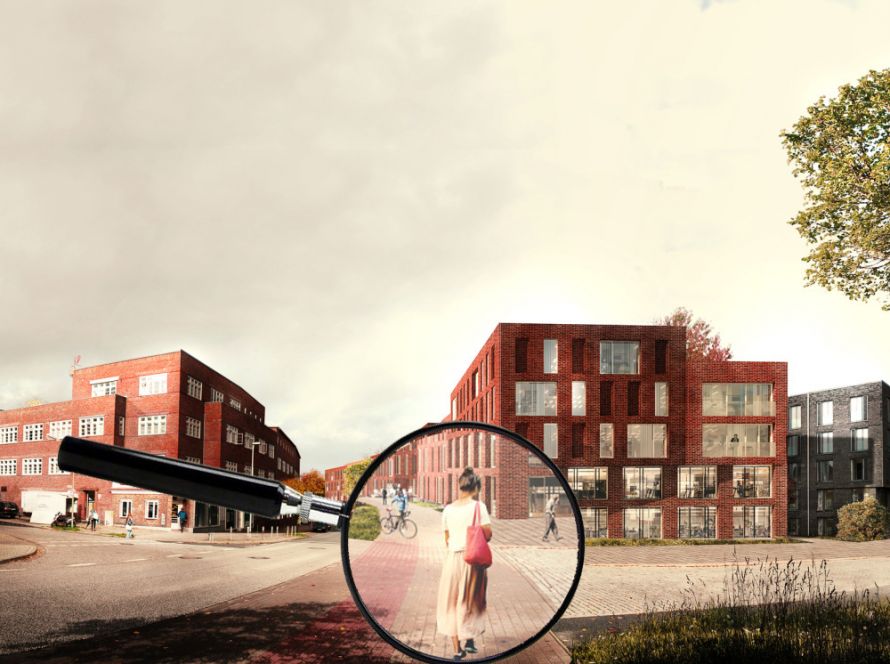3D rendering for architectural visualization has been around for decades and it has proven to be an invaluable means of selling a concept. That means most of the clients for the past 10 years or so are knowledgeable about the technology and have high expectations in 3d drawings . The competition is fierce, and the market is filled with incredibly skilled designers who seem to be able to create in one design in just one day, which will put you a lot of pressure and need. trying harder.
Good modeling, texture, lighting and staging are always the keys to a drawing’s success, if one aspect is ignored then the 3d image will not work properly. Here are some Archviz tips to help you create better renderings, and the workflow for archviz will give you enough time to finish your project on time!
Working process
1 / Use assets
Illuminate an architectural manuscript with great precision, from texturing walls, floors and ceilings thanks to intricate button setups for realism, lighting up the room to perfection. To make this stage better and to help solve some difficult problems nowadays there are many packages with reasonable prices offered. You can refer to as: Chocofur, iMeshh, Evermotion and CGTrader. You will save a lot of time thanks to the assets available from the providers with the right packages and prices.
2 / Use substance
 Textures are something you can either love or hate, and more often than not it’s determined by the tools you have available for texturing your objects. If you enjoy browsing sites like ArtStation to see what your competition is up to, you may have noticed that the substance kit is at the core of their many incredible elements.
Textures are something you can either love or hate, and more often than not it’s determined by the tools you have available for texturing your objects. If you enjoy browsing sites like ArtStation to see what your competition is up to, you may have noticed that the substance kit is at the core of their many incredible elements.
With the affordable price plus an extensive library ready to use the presets, the utility of substance is great, and if you’ve never liked a particular structure, you can check it out. break it down after spending a little time studying substance.
3 / Use addons
The light setup, camera rig using third party plugins available for various 3d programs are widely used today! Regularly visit the online marketplace to see what’s new out there, and it is yours to find solutions to many process problems. With special customer requirements you will think that is not possible, but do not rush to reply as sometimes some important addition to the tool bag will help you to solve the problem.
4 / Use render farms
Use render farms that allow you to send your projects in parallel to display their frames, reduce your render times exponentially, and leave your personal machine ready for other work. In addition they also ensure work efficiency for better 3d designers.
Your job is to find a suitable modern render farms for you to finish your project in the shortest amount of time. Currently, there are many online Rendering services, you just need to send data to and wait a while to receive the “file” back. But the risk of data loss when using this service is huge, so you must consider carefully before using this solution.
Adjusted
The refinement phase of a project can often be the most difficult, mainly due to problems that are more difficult to identify. You can run bad geometry detection operations, you can spot problems on your models at a glance, but what if the whole image doesn’t go as expected? Here are a few tips for 3d that you can consider.
1 / Make sure the cam is at eye level
You’ve modeled, textured, brightened and staged your render and hit the Render button. Your image will not be completely correct, although the models look great, from composition to lighting.
In cases like these are most likely just a matter of perspective, check to see if the distance from your camera to the ground is close to eye level. If you intend to do an aerial view, give the camera the correct height to set it up and there is no room for speculation. Keep your camera at a distance achievable in real space.
2 / White balance
One important thing to model the real world is to copy the physical behavior of light as it bounces around the scene. Light never hits the surface in a vacuum, the colors in the perspective are the direct result of all the colors reflected from the modeling surfaces, the light surfaces interacting with the object medium. physical.
One way to use white balance is to create a master with a shader set to white and sample the values of those masters from the test render. If on your 3d software you set the white level to the sampled value, you will compensate the color with the color temperature bringing the white value closer to the neutral white. This gives you a closer look at how our eyes perceive light in real life.
3 / Exposure
With a master as mentioned above, set the color value to 18% gray or (0.18 for RG and B channels) and generate a test render. Look at your test render through the heat map available in the 3d software, and adjust the exposure until the gray in your original matches the grayscale in your scene.
4 / Light extraction
One of the advantages of working in 3d mode is the ability to brighten the image in ways that are practically impossible during an actual photo shoot and achieve lighting effects without any treatment. heavy post-production. One great tip we shared with you is to highlight key objects in your render by adding some border lighting to them.
5 / Create more impact
Whether it’s a speck of airborne dust or a barely noticeable fingerprint on a piece of glass, adding interactions on your objects from the real world can feel more profound. render, making them look more realistic when created.
Hope this article gives you an insight into the aspects of architectural visualization. Keep in mind that while these tips help you be more productive and help handle more abstract parts of the design, they are by no means nullifying the habit of challenging yourself and hone your skills when may. Keep learning, keep growing, and don’t be afraid to do whatever it takes to speed up your workflow.







